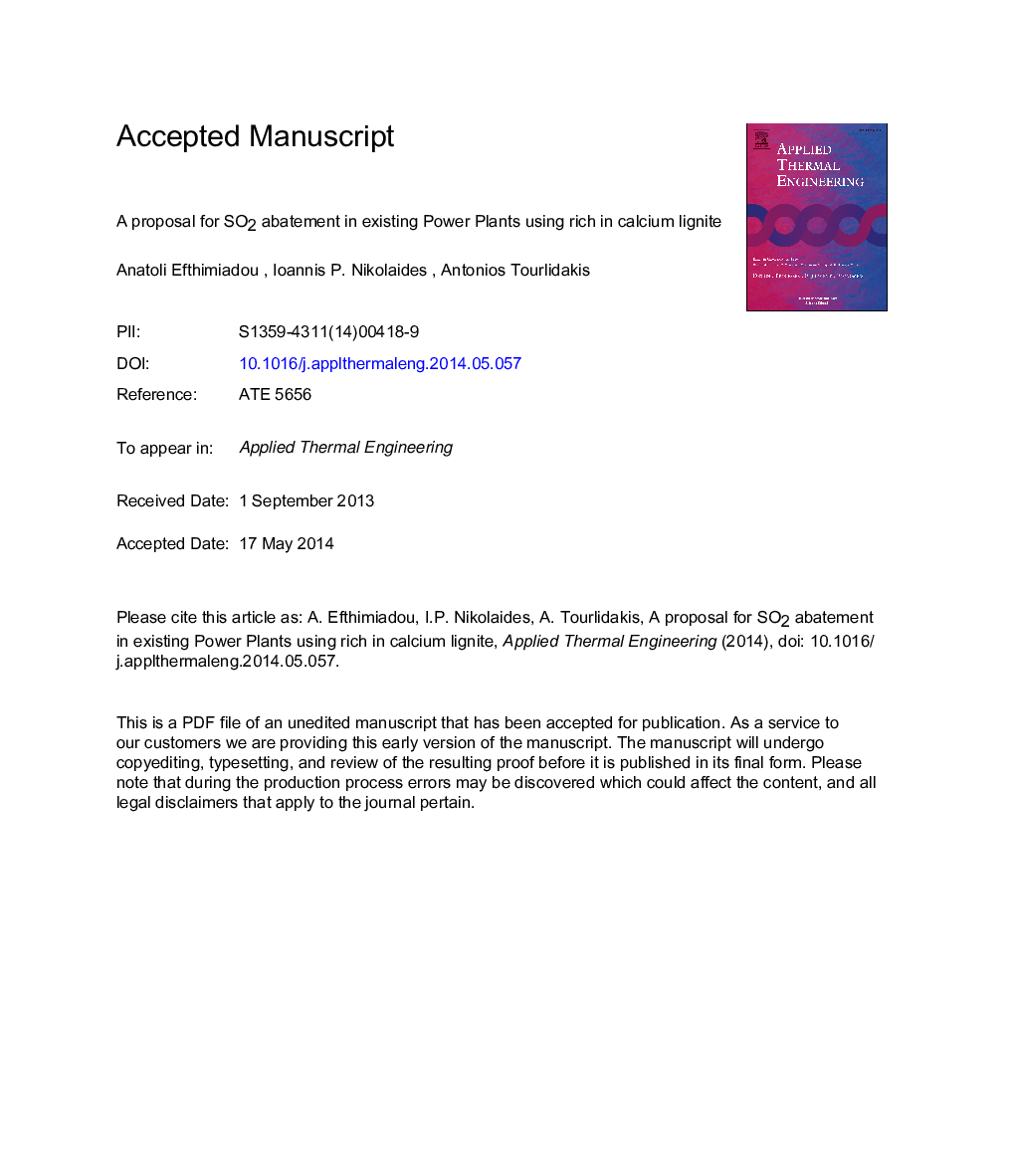| Article ID | Journal | Published Year | Pages | File Type |
|---|---|---|---|---|
| 645867 | Applied Thermal Engineering | 2015 | 28 Pages |
Abstract
The scope of this research work is an effort to study the effect of the so called “natural desulphurization” and have its efficiency characterized in terms of certain lignite physical parameters. Under proper mixing and homogenization of the lignite feed to the power plants, the peak SO2 emissions can be smoothed out. Further desulphurization of the flue gas can be achieved by several dry FGD techniques already investigated in Greece and elsewhere [1]. Dry FGD is reported to have an efficiency limitation of 80% in the cool side of the combustion process (after LUVO). SO2 emission concentrations in the vicinity of 1.000Â mg/Nm3 can by cooped with low investment dry FGD installation (with multiple injection points if required). Actual operation data show a clear relation between power load and flue gas velocities in the ducts as well as SO2 emission concentrations. A feasibility study carried out for a dry FGD installation is compared to wet FGD technology. It turns out that if lignite feed homogenization is employed, power plants can afford a compromising solution with power load losses in case of peak SO2 emissions and dry FGD installations instead of the classic and expensive wet FGD solution.
Keywords
Related Topics
Physical Sciences and Engineering
Chemical Engineering
Fluid Flow and Transfer Processes
Authors
Anatoli Efthimiadou, Ioannis P. Nikolaides, Antonios Tourlidakis,
